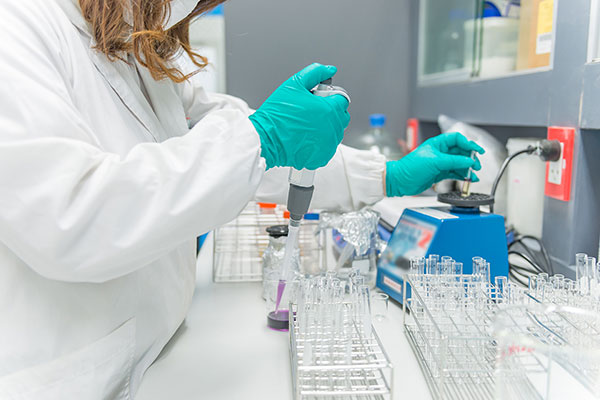sulfo-Cyanine
Customized Fluorescent Reagents
One-stop Solution for Your Research
BOC Sciences offers a one-stop solution for fluorescent reagents, providing custom synthesis, modification, and large-scale production services. Our comprehensive portfolio includes high-purity fluorescent dyes, probes, and labeling reagents for research and industrial applications, ensuring superior performance and reliability.
Explore More

Background
BOC Sciences is committed to providing customers with high-quality sulfo-cyanine dyes. The sulfo-cyanine dyes we can provide include sulfo-Cy3, sulfo-Cy3.5, sulfo-Cy5, sulfo-Cy5.5, sulfo-Cy7 and sulfo-Cy7.5. By modifying the molecular structure of sulfocyanine dyes in different ways, many sulfocyanine dyes with special properties and uses can be obtained.
Background
Cyanine dyes are ordinarily composed of two macrocyclic systems and two parts of the polymethine chain in the middle. Among them, the polymethine chain is generally a conjugated chain bridge containing an odd number of carbon atoms. According to the length of the polymethine chain, cyanine dyes are divided into monomethine cyanine dyes, trimethine cyanine dyes, pentamethine cyanine dyes, heptamethine cyanine dyes and so on. The hydrogen of each carbon atom on the polymethine chain of the cyanine dye can be replaced by different groups to obtain the cyanine dye containing various substituents. Cyanine dyes have larger conjugate planes and quaternary ammonium cations in their molecular structure. Therefore, the cyanine dye has a great affinity for DNA, and the fluorescence is extremely enhanced after binding to DNA. In addition, the cyanine dye has a wide wavelength range, which can reach the near-infrared region, which can effectively avoid the autofluorescence of biological systems and improve the sensitivity of detection.
Introduction of sulfo-cyanine dyes
Cyanine dyes used as labeling dyes for biological macromolecules should ordinarily have good water solubility. Therefore, the water solubility of the cyanine dye is increased by introducing a strong hydrophilic sulfonic acid group. Sulfocyanine dyes have good water solubility and can label biomolecules in pure water without relying on organic cosolvents.
Biological application of sulfo-cyanine dyes
Sulfocyanine dyes can be used as fluorescent probes for nucleic acid staining or labeling and the derivation or labeling of amino acids, peptides and proteins in biological analysis. In the field of immunoassay, sulfocyanine dyes are used as antibody or antigen markers to improve the sensitivity of analysis. In addition, the sulfocyanine dye with a longer wavelength range can eliminate the background interference of many small molecules to the greatest extent, and could be used as a class of small molecule sensitive fluorescent probes.
Resources

- Hoechst Dyes: Definition, Structure, Mechanism and Applications
- Mastering the Spectrum: A Comprehensive Guide to Cy3 and Cy5 Dyes
- Fluorescent Probes: Definition, Structure, Types and Application
- Fluorescent Dyes: Definition, Mechanism, Types and Application
- Coumarin Dyes: Definition, Structure, Benefits, Synthesis and Uses
- Unlocking the Power of Fluorescence Imaging: A Comprehensive Guide
- Cell Imaging: Definitions, Systems, Protocols, Dyes, and Applications
- Lipid Staining: Definition, Principles, Methods, Dyes, and Uses
- Flow Cytometry: Definition, Principles, Protocols, Dyes, and Uses
- Nucleic Acid Staining: Definition, Principles, Dyes, Procedures, and Uses
Online Inquiry

